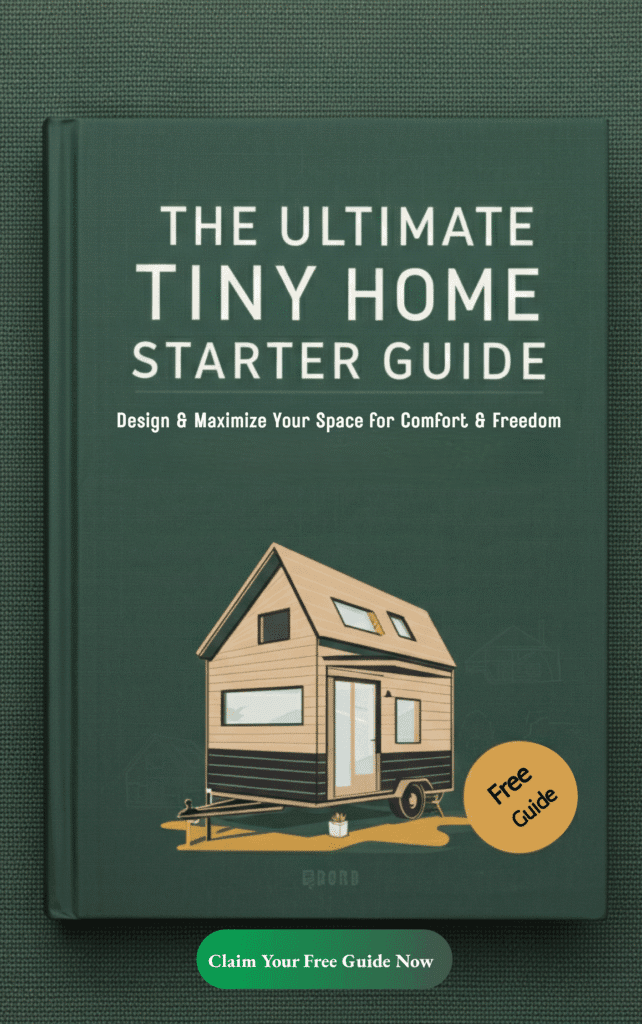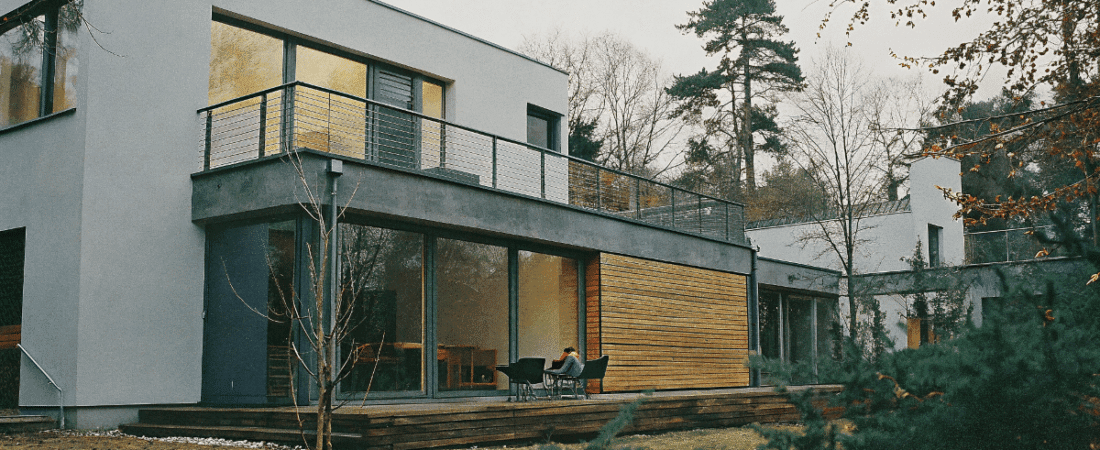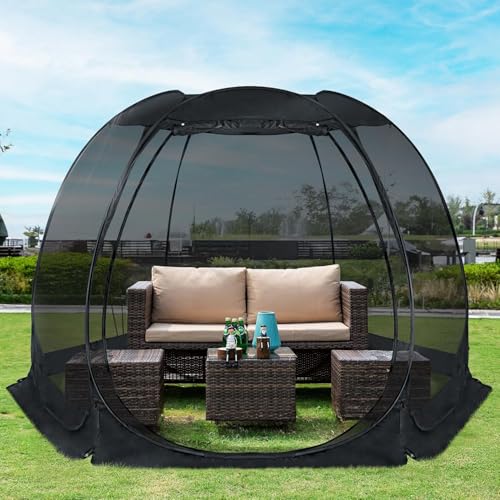Contemporary prefab home designs are redefining modern living with their innovative approach to construction and design. These homes blend style, efficiency, and sustainability, offering an attractive alternative to traditional site-built houses. Featuring floor to ceiling windows that enhance natural light and showcase surrounding views, along with rapid assembly, customizable options, and eco-friendly features, prefab homes are an ideal choice for forward-thinking homeowners. Additionally, these designs often include open floor plans that seamlessly connect interior and outdoor spaces, further enhancing their appeal.
Key Points:
- What is a Prefab Home?: Prefab homes are factory-built structures assembled on-site, known by various terms such as prefabricated, modular, or manufactured homes, distinguished by efficient construction methods and modern standards.
- Benefits of Prefab Homes: Prefabricated homes offer rapid construction, high quality control, environmental sustainability, and customization, making them a preferred choice for modern homeowners.
- Types of Prefab Homes: Main types include modular, panelized, and kit homes, each offering different construction methods, customization options, and design flexibility to suit various preferences.
- Modern Prefab Home Designs: Contemporary prefab homes feature sleek aesthetics, expansive windows, outdoor connectivity, and customizable options that blend style with functionality and sustainability.
- Sustainability and Eco-Friendliness in Prefab Homes: Prefab homes prioritize eco-friendly materials, energy-efficient features, and waste reduction techniques, making them a green housing alternative with high-performance standards.
- What is a Prefab Home?
- Benefits of Prefab Homes
- Types of Prefab Homes
- Modern Prefab Home Designs
- Sustainability and Eco-Friendliness in Prefab Homes
- Technological Innovations in Prefab Homes
- Prefab Home Builders and Designers
- Prefab Home Prices
- Prefab Home Construction
- Prefab Home Maintenance
- Prefab Home Financing
- Prefab Home Regulations
- Prefab Home Insurance
- Prefab Home Resale Value
- Prefab Home Communities
- Final Say
- FAQ's
- Are prefab homes a good investment in terms of resale value and long-term durability?
- How do modern prefab home designs combine style and sustainability?
- What are the different types of prefab homes available, and how do they differ?
- What are the main benefits of choosing a prefab home over traditional construction?
- What exactly is a prefab home and how is it constructed?
What is a Prefab Home?
Prefab homes are all the rage.
They’re built in factories, with 80%-90% of the construction typically completed before being transported for on-site assembly.
They’re assembled on-site.
They’re efficient.
But what exactly are they?
Here’s the scoop:
Factory-Built Wonder: A prefab home gets constructed in a factory setting before making its way to your property for final assembly.
Many Names, Same Concept: You might hear them called prefabricated homes, modular homes, or manufactured homes – all pointing to the same innovative housing approach.
Prefab vs. Mobile Homes: Unlike prefab homes, mobile homes are built to different standards and regulations. Modern mobile homes, also known as manufactured homes, have evolved significantly from their predecessors, with updated building codes and designs.
Smart Living Solution: They’re designed with efficiency in mind, offering sustainability features and wallet-friendly options for modern homeowners. A home builder can quickly assemble the prefab modules to construct the house in typically three to six months.
Benefits of Prefab Homes
Why choose prefab?
The advantages are clear.
Here’s why people love them:
Speed Demons: Prefab homes zip through construction way faster than those old-school site-built houses that seem to take forever.
Quality Control Champions: Built in controlled factory environments, these homes minimize waste and maximize quality oversight – no more worrying about rain ruining your half-finished walls!
Earth-Friendly Options: They typically boast better energy efficiency and smaller environmental footprints, making Mother Nature smile. Prefab manufacturing results in far less material waste than traditional builds due to accurate predictions of material needs.
Modular Housing: Modular housing offers sustainability, cost savings, and construction efficiency. Factory-built homes reduce build time and improve quality control, with innovative approaches from companies specializing in modular construction.
Custom Made for You: These homes can be tweaked and tailored to match your specific dreams and budget limitations.
Types of Prefab Homes
Finding the right prefab style is key.
Not all prefab homes are created equal.
Here are the main contenders:
Modular Homes
Modular offers flexibility and permanence.
Here’s what to know:
Factory to Forever Home: These babies are built in sections at a factory, then shipped and assembled at your property site.
Structural Integrity: Load bearing walls are crucial in ensuring the structural integrity and flexibility of your home design. Adhering to building codes during construction is essential, and innovative engineering can reduce the need for these walls, enhancing layout options for homeowners.
Looks Like the Real Deal: Once finished, most folks can’t tell the difference between these and traditional stick-built houses – they’re that good!
Your Home, Your Way: Modular designs can be customized to fit your personal taste and financial situation, offering plenty of room for creativity. Modular home manufacturers collaborate with architecture studios to offer a wider selection of plans and customization options.
Panelized Homes
Panelized means precision and efficiency.
Check this out:
Pre-Built Puzzle Pieces: These homes come as pre-assembled wall panels, floor panels, and roof panels – all factory-made for precision.
Smart Construction Approach: They’re specifically engineered to save time and money while maintaining quality.
Tailored to Taste: Like their modular cousins, panelized homes can be adjusted to match what you want and what you can afford.
Kit Homes
Kit homes put you in charge.
Here’s the deal:
DIY Dream: Kit homes arrive at your doorstep ready for assembly, either by you or a contractor you hire.
Budget-Friendly Option: They’re designed with cost-consciousness and hands-on homeowners in mind.
Make It Yours: These too can be customized to reflect your personal housing needs and financial boundaries.
Modern Prefab Home Designs
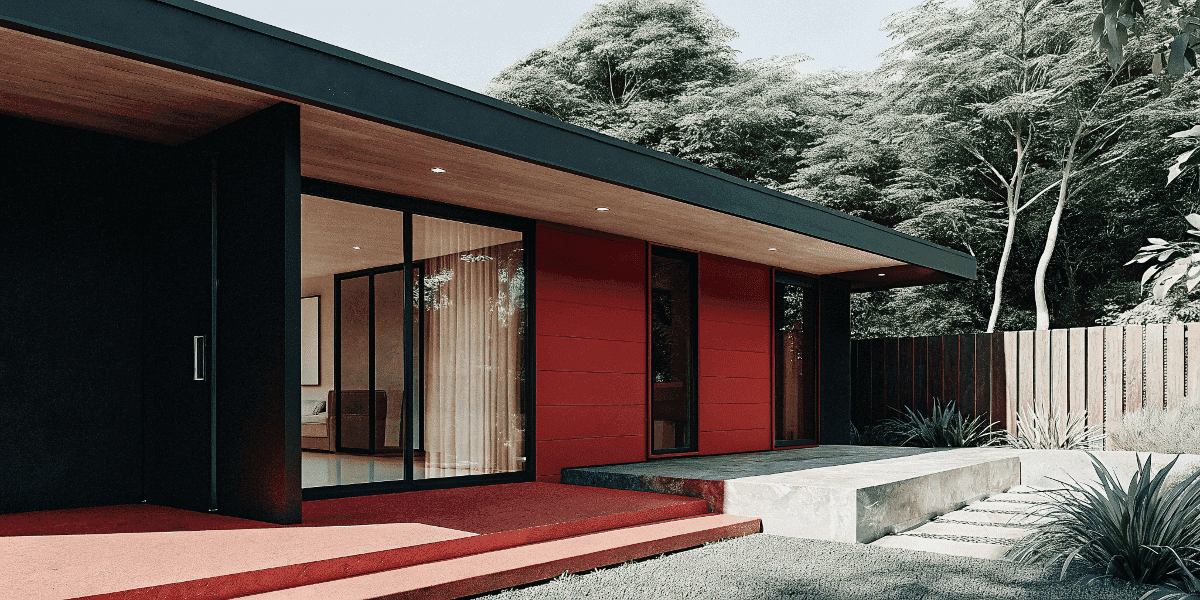
Today’s prefab isn’t your grandpa’s mobile home.
Modern prefabs are stunning.
Here’s what’s hot:
Sleek and Sustainable: Contemporary prefab designs emphasize clean lines, modern aesthetics, and eco-friendly features that would make any design magazine proud.
Light and Space: Many feature expansive windows, outdoor living connections, and energy-efficient systems that lower bills while raising comfort.
Outdoor Spaces: Modern prefab house designs integrate outdoor spaces that enhance the connection between indoor and outdoor living, making these areas both functional and aesthetically pleasing.
Your Vision Realized: These cutting-edge designs still offer plenty of customization options to match your lifestyle and budget constraints.
Sustainability and Eco-Friendliness in Prefab Homes

Prefab homes are designed with sustainability and eco-friendliness in mind, making them an attractive option for environmentally conscious homeowners. Many prefab home manufacturers use recycled and sustainable materials in their construction process, significantly reducing waste and minimizing the carbon footprint of the home.
These homes often come equipped with energy-efficient features such as solar panels, rainwater harvesting systems, and high-performance insulation, which help reduce energy consumption and costs. The use of structural insulated panels (SIPs) in prefab homes provides excellent thermal performance, cutting down on heat loss and further enhancing energy efficiency.
Prefab homes can also be designed to meet high-performance building standards, such as Passive House certification, ensuring a high level of energy efficiency and sustainability. The factory-based construction process of prefab homes reduces waste and minimizes the environmental impact of construction, as materials are carefully managed and optimized.
Incorporating natural and renewable materials, such as cedar shingles, prefab homes are built to last, reducing the need for frequent repairs and replacements. The use of modular construction techniques allows for the efficient use of materials and reduces waste, making prefab homes a more sustainable option compared to traditional site-built homes.
Technological Innovations in Prefab Homes
Prefab homes are at the forefront of technological innovation in the construction industry, with many manufacturers incorporating cutting-edge technologies into their designs. The use of building information modeling (BIM) software allows prefab home manufacturers to design and construct homes with precision and accuracy, reducing errors and improving efficiency.
These homes can be designed with smart home technology, enabling homeowners to control and monitor their energy usage, lighting, and security systems remotely. The advent of 3D printing technology is also making waves in prefab home construction, allowing for the rapid creation of complex components and structures.
Advanced materials and systems, such as phase change materials and radiant floor heating, are often integrated into prefab homes, providing improved energy efficiency and comfort. The modular construction techniques used in prefab homes facilitate the efficient integration of new technologies and systems, making it easier to upgrade and modify homes over time.
Prefab homes can also be designed with advanced safety features, such as fire-resistant materials and state-of-the-art security systems, providing homeowners with peace of mind. The use of data analytics and monitoring systems in prefab homes allows homeowners to track their energy usage and optimize their energy efficiency, reducing costs and environmental impact.
By embracing these technological innovations, prefab homes not only offer modern living solutions but also pave the way for a more sustainable and efficient future in housing.
Prefab Home Builders and Designers
Who makes these amazing homes?
Let’s look at some standouts:
Modular construction companies are also key players in the evolving perception of modular homes, which are now being recognized for their quality and luxury.
Method Homes
Method brings modern vision to prefab.
Here’s their story:
Modern Sustainable Focus: This builder specializes in creating contemporary, earth-friendly prefab homes that look amazing. Method Homes provides extensive customization options for prefab homes which include various styles and finishes.
Modular Masters: They’ve perfected modular techniques and offer plenty of ways to make your home uniquely yours.
Pacific Northwest Roots: Based in Seattle, Washington, their aesthetic often reflects the region’s appreciation for natural beauty and innovation.
Blu Homes
Blu combines technology and design.
Check them out:
Energy-Smart Designs: Blu Homes creates cutting-edge, energy-efficient prefab houses that perform as good as they look. Blu Homes designs premium prefabricated homes that offer a variety of amenities.
Modular Innovation: Their construction approach uses modular methods with plenty of personalization possibilities.
California Dreaming: Headquartered in Vallejo, California, their designs often capture that indoor-outdoor living vibe the state is famous for.
Prefab Home Prices
Money matters.
But prefabs can be affordable.
Here’s the financial picture:
Price Range Reality: Costs for prefab homes swing widely depending on size, design complexity, and fancy features you might choose.
Square Foot Breakdown: On average, expect to pay between $50 and $200 per square foot – a pretty wide range that reflects the variety available.
Value Proposition: When all factors are considered, prefab homes often deliver more bang for your buck compared to the traditional building route. Prefab homes tend to be more affordable than site-built houses.
Prefab Home Construction
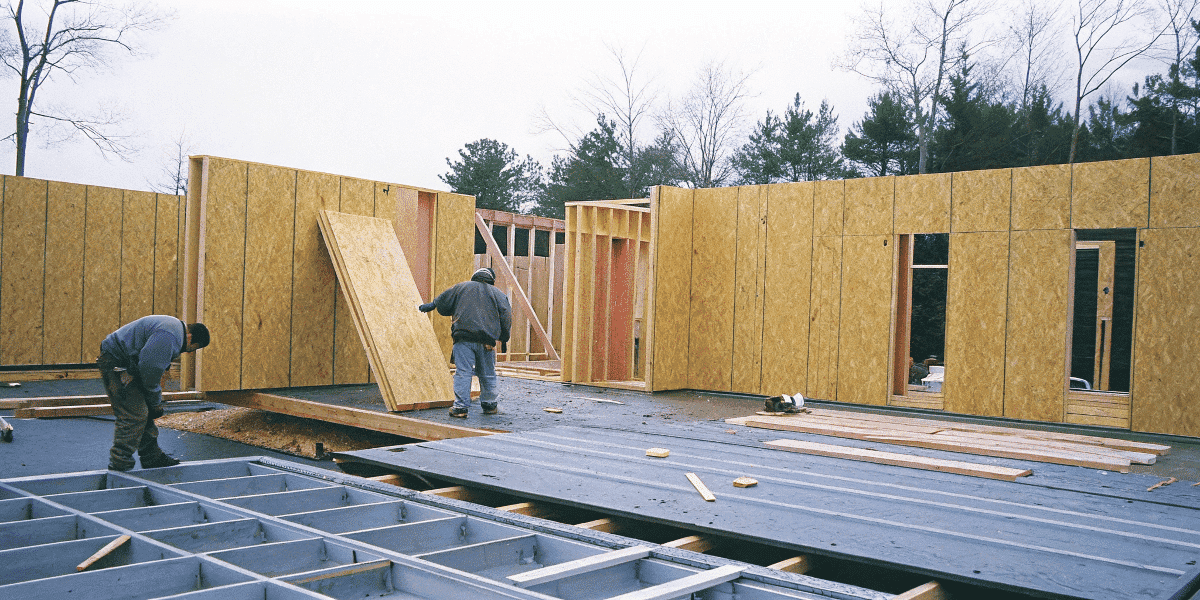
How do these homes come together?
The process is fascinating.
Here’s how it works:
Factory to Foundation: The construction journey starts in a climate-controlled factory where precision building happens, then moves to your site for final assembly.
Module Magic: These homes get built in chunks or sections (called modules), making the whole process more efficient than traditional methods.
Advantages of Modular Houses: Modular houses offer design versatility and efficient prefabrication, making them stylish and practical in modern architecture.
Speed and Efficiency: The prefab approach typically shaves significant time off construction schedules compared to conventional building methods.
Prefab Home Maintenance
Upkeep matters in any home.
What about prefabs?
Here’s the maintenance scoop:
Regular TLC Required: Like any house, prefabs need consistent maintenance to stay in tip-top shape and protect your investment.
Built Tough: These homes are engineered for durability and longevity, but still need your attention to reach their full potential.
Maintenance Made Easier: Many prefab designs incorporate materials and systems that are actually easier and less costly to maintain than their traditional counterparts.
Prefab Home Financing
Money makes homes happen.
How do you finance prefab?
Consider these points:
Options Exist: Yes, there are financing solutions available if you’re looking to purchase a prefab home – you’re not left out in the cold.
Financing Flavors: Your choices include traditional mortgages, construction-specific loans, and personal financing depending on your situation.
Extra Hoops: Be prepared – financing a prefab sometimes requires jumping through more hoops than when buying a conventional home due to the different construction process.
Prefab Home Regulations
Rules and regs can be tricky.
Location matters.
Here’s the regulatory landscape:
Location, Location, Location: Prefab home regulations vary dramatically depending on where you live – what’s perfectly fine in one state might be problematic in another.
Code Compliance: Your prefab home must satisfy local building codes and regulations just like any other structure.
Complexity Factor: The regulatory process for prefabs can sometimes be more involved than for traditional construction due to their unique building methods.
Prefab Home Insurance
Protection is essential.
Can you insure prefabs?
Absolutely!
Coverage Available: Insurance options definitely exist for prefab homeowners looking to protect their investment.
Insurance Types: You can pursue either standard homeowners policies or specialized coverage designed specifically for prefabricated structures.
Hurdles Exist: Securing insurance might require extra effort compared to traditional homes as some insurers are less familiar with prefab construction methods.
Prefab Home Resale Value
Investment potential matters.
How do prefabs hold value?
Better than you might think:
Value Retention: Well-built prefab homes can maintain their worth impressively over time, making them smarter investments than many assume.
Built to Last: The durability and quality control in modern prefabs often translates to better long-term value preservation.
Market Appeal: In many areas, the resale value of quality prefab homes actually outperforms traditional construction, especially as buyers become more eco-conscious.
Prefab Home Communities
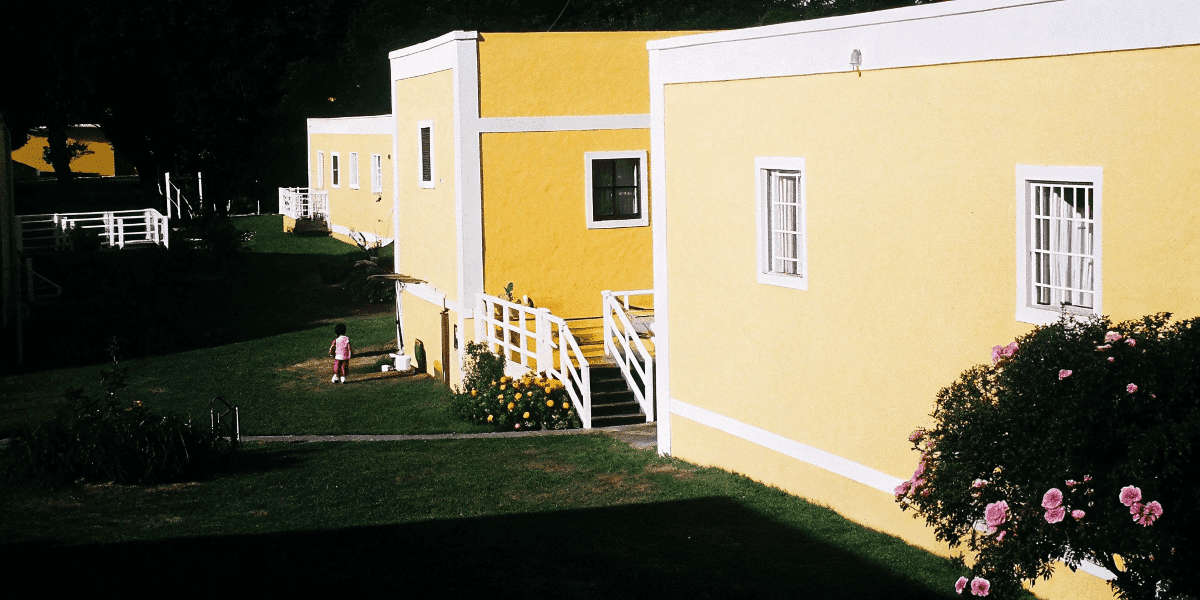
Prefab neighborhoods are growing.
Community matters.
Here’s what they offer:
Strength in Numbers: Prefab communities bring together homes with similar construction philosophies, creating cohesive developments.
Shared Amenities: Many offer community perks like parks, playgrounds, and recreation areas that enhance your living experience.
Like-Minded Neighbors: These communities often attract people with similar values around efficiency, sustainability, and modern living approaches.
Final Say
Prefab homes aren’t just houses.
They’re a lifestyle choice.
They’re the future.
And they make sense.
Here’s why:
Smart Living Solution: Prefab homes represent an intelligent choice for homeowners seeking modern, sustainable, and cost-effective housing options in today’s market.
Benefits Galore: The advantages – from speedy construction and energy efficiency to customization possibilities – make a compelling case for going prefab.
Solid Investment: With their durability, modern designs, and increasing market acceptance, prefab homes can serve as excellent long-term investments for forward-thinking homeowners.
FAQ’s
Are prefab homes a good investment in terms of resale value and long-term durability?
Yes, well-built prefab homes can maintain their value effectively over time. Their durability and quality control during manufacturing often translate into better long-term resale value, and their modern, sustainable designs make them appealing in the real estate market.
How do modern prefab home designs combine style and sustainability?
Modern prefab homes feature sleek aesthetics, expansive windows, outdoor connectivity, and customizable options that blend contemporary style with functional sustainability features such as eco-friendly materials, energy-efficient systems, and high-performance insulation to reduce environmental impact and energy costs.
What are the different types of prefab homes available, and how do they differ?
The main types of prefab homes include modular homes, panelized homes, and kit homes. Modular homes are built in sections in a factory and assembled on-site, panelized homes are made of pre-assembled wall, roof, and floor panels, and kit homes come with components ready for self-assembly or contractor construction, each providing different levels of customization and construction methods.
What are the main benefits of choosing a prefab home over traditional construction?
Prefab homes offer several advantages including faster construction times, high quality control due to factory production, environmental sustainability through reduced waste, and the ability to customize the design to meet personal preferences and budgets.
What exactly is a prefab home and how is it constructed?
A prefab home is a house that is built in a factory setting where most of the construction, typically 80%-90%, is completed before being transported to the building site for final assembly. It involves factory-built sections or modules that are assembled on-site to create the complete home.

